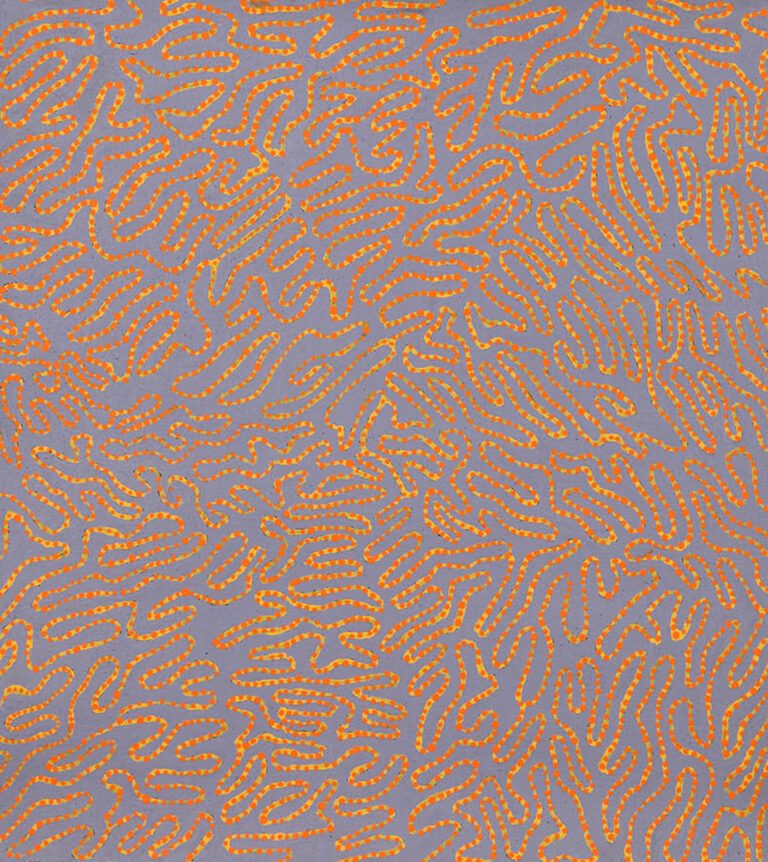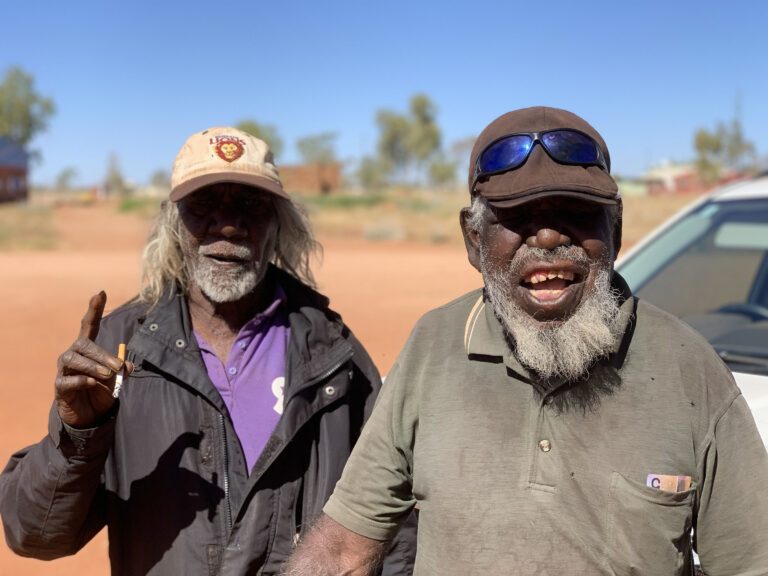

partnership
with












Yunarla is defined by its rockhole and creek, and is located west of the community of Kiwikurra. In the Dreaming, a large group of ancestral Tingarri people camped at this place. While there, they gathered the edible roots of the bush banana or silky pear vine, which is also known as yunarla, and is plentiful in the area. The lines in the work represent the root system of the plant growing outward from the primary water source.
Language Group: Pintupi
Date: Born 1952
Joseph Jurra Tjapaltjarri was born at Kiwirrkurra, but was led to Papunya in 1962 by Jeremy Long’s Welfare Patrol. After observing the founding members at work, Joseph Jurra began painting for Papunya Tula Artists in 1986. He quickly rose to prominence for his innovative take on classical Tingarri designs but is best known for his rhythmic patterns that evoke the hazy atmosphere of the hot desert. Joseph Jurra served as chairman for Papunya Tula Artists in 1999 and 2000. He was a part of the John Weber Gallery exhibition in 1989 and that same year received a solo show at the Gallery Gabrielle Pizzi. All of Joseph's three sisters have painted for Papunya Tula Artists, as well as his son, Adrian Jurra Tjungurrayi.

JOSEPH JURRA TJAPALTJARRI, Yunarla, 2021
Synthetic polymer paint on canvas. 24 × 21 5/8 in. (61 × 55 cm). Commissioned by Richard Klingler and Jane Slatter for Irriṯitja Kuwarri Tjungu | Past and Present Together.
© estate of the artist licensed by Aboriginal Artists Agency Ltd for Papunya Tula Artists Pty Ltd.

Ray James Tjangala and Joseph Jurra Tjapaltjarri: Painters of Yunarla. Walungurru, 2021.
Photo by John Kean.